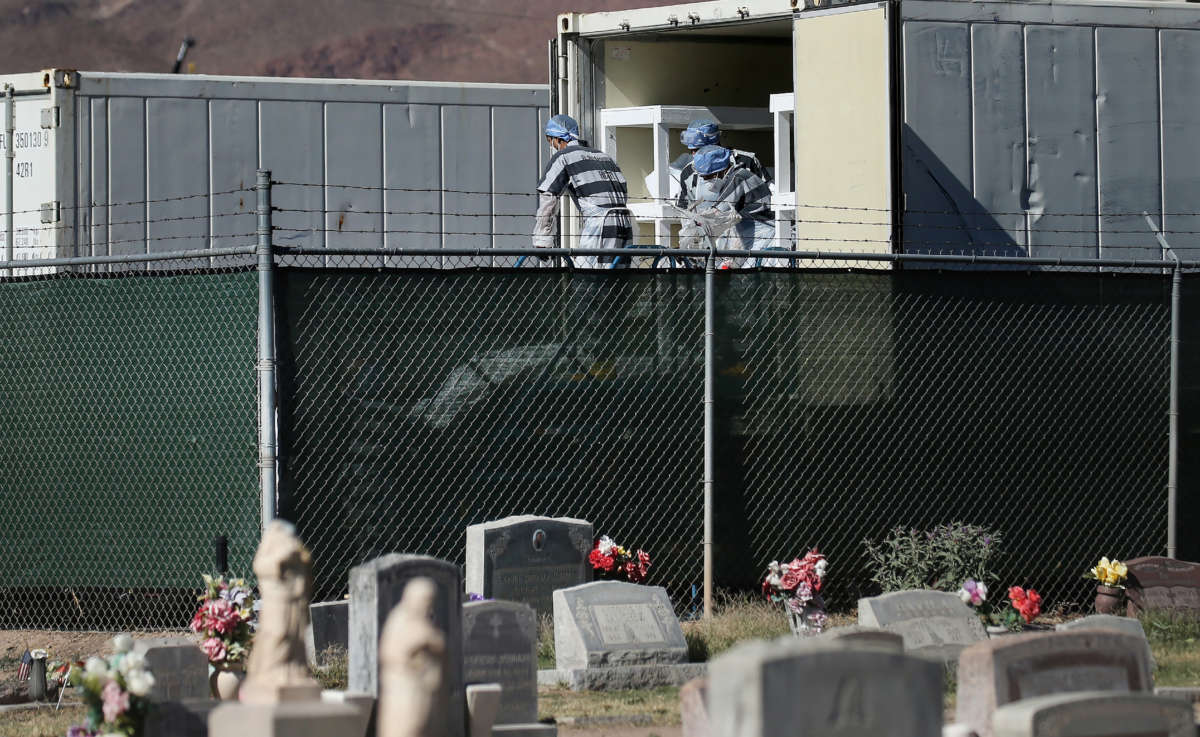Support justice-driven, accurate and transparent news — make a quick donation to Truthout today!
A new study, which examines the outcomes of different states’ approaches to the coronavirus pandemic based on what party their governors belonged to, shows that, for most of 2020, states with Republican governors were more likely to see higher incidence rates and death tolls versus states with Democratic governors.
Published in the peer-reviewed American Journal of Preventive Medicine this month, the study, conducted by researchers at the Johns Hopkins Bloomberg School of Public Health and the Medical University of South Carolina, took a look at different parts of the pandemic and saw a noticeable shift happening at the start of summer last year.
At the onset of the pandemic, from March until early June, there were higher per capita incidence rates as well as deaths from the virus within Democratic states. But from July through the remainder of the year, states with Republican governors had worse outcomes.
“From March to early June, Republican-led states had lower Covid-19 incidence rates compared with Democratic-led states. On June 3, the association reversed, and Republican-led states had higher incidence,” the study said.
“For death rates, Republican-led states had lower rates early in the pandemic, but higher rates from July 4 through mid-December,” the study added.
“Governors’ party affiliation may have contributed to a range of policy decisions that, together, influenced the spread of the virus,” said the study’s senior author Sara Benjamin-Neelon, a professor in the Bloomberg School’s Department of Health, Behavior and Society. “These findings underscore the need for state policy actions that are guided by public health considerations rather than by partisan politics.”
Why did “blue” states fare worse at the start of the pandemic than “red” ones? The researchers theorize it had less to do with policies implemented by Democratic governors, and more because those areas were “home to initial ports of entry for the virus in early 2020.”
Meanwhile, researchers said, “The subsequent reversal in trends, particularly with respect to testing, may reflect policy differences that could have facilitated the spread of the virus,” the study stated.
The pandemic, the authors added, “became increasingly politicized in the U.S. and political affiliation of state leaders may contribute to policies affecting the spread of the disease.”
Several Republican governors did indeed prioritize “reopening” their states’ economies, with detrimental outcomes, around the time the study said things began to shift. Former President Donald Trump himself seemed to politicize methods to stem the spread of coronavirus, stating in a Wall Street Journal interview that he thought people wore masks in order to demonstrate their disapproval of him.
Trump also tried to wrongly suggest in September that drastic rises in the number of cases and deaths due to COVID-19 were not because some states were loosening standards, but rather due to Democratic leadership.
“Blue states had tremendous death rates. If you take the blue states out, we’re at a level that I don’t think anybody in the world would be at,” Trump had claimed. “We’re really at a very low level. But some of the states, they were blue states and blue-state-managed.”
The findings of the Johns Hopkins Bloomberg School of Public Health and the Medical University of South Carolina study demonstrate that the former president’s assertions were way off.
Media that fights fascism
Truthout is funded almost entirely by readers — that’s why we can speak truth to power and cut against the mainstream narrative. But independent journalists at Truthout face mounting political repression under Trump.
We rely on your support to survive McCarthyist censorship. Please make a tax-deductible one-time or monthly donation.
